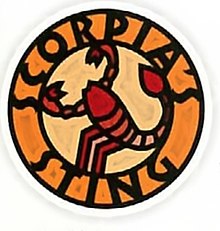
Pool of Radiance is a role-playing video game developed and published by Strategic Simulations, Inc (SSI) in 1988. It was the first adaptation of TSR's Advanced Dungeons & Dragons (AD&D) fantasy role-playing game for home computers, becoming the first episode in a four-part series of D&D computer adventure games. The other games in the "Gold Box" series used the game engine pioneered in Pool of Radiance, as did later D&D titles such as the Neverwinter Nights online game. Pool of Radiance takes place in the Forgotten Realms fantasy setting, with the action centered in and around the port city of Phlan.
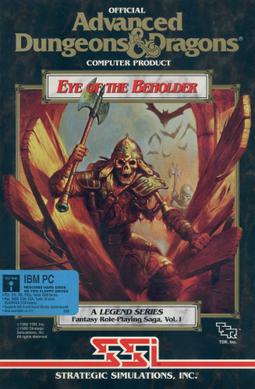
Eye of the Beholder is a role-playing video game for personal computers and video game consoles developed by Westwood Associates. It was published by Strategic Simulations, Inc. in 1991, for the MS-DOS operating system and later ported to the Amiga, the Sega CD and the SNES. The Sega CD version features a soundtrack composed by Yuzo Koshiro and Motohiro Kawashima. A port to the Atari Lynx handheld was developed by NuFX in 1993, but was not released. In 2002, an adaptation of the same name was developed by Pronto Games for the Game Boy Advance.

Curse of the Azure Bonds is a role-playing video game developed and published by Strategic Simulations, Inc (SSI) in 1989. It is the second in a four-part series of Forgotten Realms Advanced Dungeons & Dragons Gold Box adventure computer games, continuing the events after the first part, Pool of Radiance.
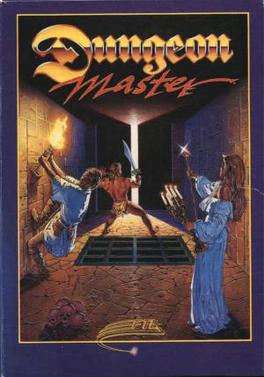
Dungeon Master is a role-playing video game featuring a pseudo-3D first-person perspective. It was developed and published by FTL Games for the Atari ST in 1987, almost identical Amiga and PC (DOS) ports following in 1988 and 1992.

Computer Gaming World (CGW) was an American computer game magazine published between 1981 and 2006. One of the few magazines of the era to survive the video game crash of 1983, it was sold to Ziff Davis in 1993. It expanded greatly through the 1990s and became one of the largest dedicated video game magazines, reaching around 500 pages by 1997.

Might and Magic V: Darkside of Xeen is a science fantasy role-playing video game published and developed for multiple platforms by New World Computing in 1993. Based on the Might and Magic III: Isles of Terra game engine, it is the fifth game in the Might and Magic series, and is a direct sequel to Might and Magic IV: Clouds of Xeen, concluding the story arc started in the original Might and Magic Book One: The Secret of the Inner Sanctum.

Wizardry: Proving Grounds of the Mad Overlord is the first game in the Wizardry series of role-playing video games. It was developed by Andrew Greenberg and Robert Woodhead. In 1980, Norman Sirotek formed Sir-Tech Software, Inc. and launched a beta version of the product at the 1980 Boston Computer Convention. The final version of the game was released in 1981.

Return to Krondor is a role-playing video game set in Raymond Feist's fictional fantasy setting of Midkemia. A sequel to 1993's Betrayal at Krondor, it was released for Windows on the PC in time for the 1998 Thanksgiving and Christmas season. Within the game, the player commands a group of heroes with different attributes, strengths, and weaknesses which the player may upgrade over the course of the game.
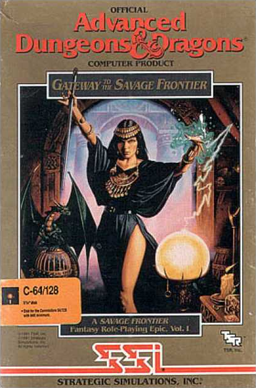
Gateway to the Savage Frontier (1991) is a Gold BoxDungeons & Dragons computer game developed by Beyond Software and published by SSI for the Commodore 64, PC and Amiga personal computers.
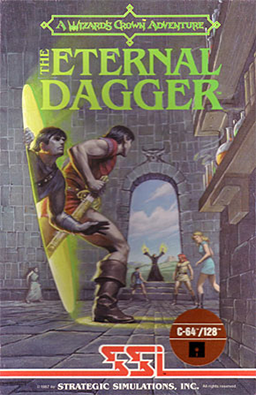
The Eternal Dagger is a top-down role-playing video game published by Strategic Simulations in 1987. It is a sequel to Wizard's Crown from 1986. Demons from another dimension are invading the world, and the only item that can seal the portal is the titular dagger. Players can transfer their characters over from Wizard's Crown, minus whatever magical items they had on them.

Normality is a 3D graphic adventure, released in June 1996 by Gremlin Interactive. All cut-scenes in the game are pre-rendered. The game's engine was later used in the game Realms of the Haunting. It was re-released in 2011 with Microsoft Windows support on GOG.com, with macOS support following in 2013 and Linux support in 2014.

Eye of the Beholder II: The Legend of Darkmoon is a 1991 role-playing video game and the sequel to the first Eye of the Beholder. It used a modified version of the first game's engine, added outdoor areas and greatly increased the amount of interaction the player had with their environment, along with substantially more role-playing aspects to the game. A sequel, Eye of the Beholder III: Assault on Myth Drannor, was released in 1993.

Black Dahlia is an interactive movie point-and-click adventure game that was released on February 25, 1998 by Take-Two Interactive. Black Dahlia is the last of the three Take-Two developed full-motion video-based adventure games, the other two being Hell: A Cyberpunk Thriller and Ripper.
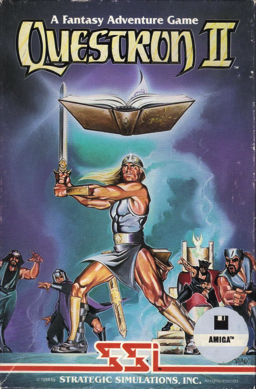
Questron II a 1988 role-playing video game published by Strategic Simulations for the Apple II, Apple IIGS, Atari ST, Commodore 64, IBM PC, and Amiga. It is the sequel to 1984's Questron. The story and original design is credited to Quest Software, the programming and artwork is credited to Westwood Associates.

Elvira II: The Jaws of Cerberus is the second game in the Elvira series of horror adventure/role-playing video games. It was developed by Horror Soft and published by Accolade in 1992. The game is a sequel to 1990's Elvira: Mistress of the Dark. It was followed by Waxworks, which can be considered its spiritual sequel.
Arinn Dembo is an American author currently living and writing in Vancouver, British Columbia, Canada. Dembo is best known for her work with Vancouver-based Kerberos Productions, where she was lead writer and has worked on the background fiction for the Sword of the Stars series and Fort Zombie.
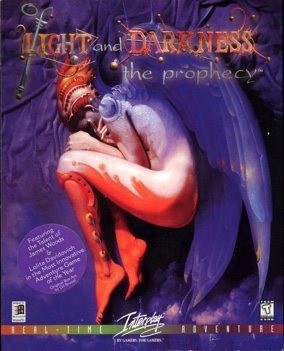
Of Light and Darkness: The Prophecy, also known as simply Of Light and Darkness, is a first-person point-and-click adventure video game developed by Tribal Dreams and published by Interplay Entertainment in 1998.

Mummy: Tomb of the Pharaoh is a point-and-click adventure video game released on August 31, 1996, by Interplay Productions on Windows and by MacPlay, a division of Interplay Productions at the time, on Macintosh. It is a sequel to Frankenstein: Through the Eyes of the Monster. The game was developed by Amazing Media, directed and produced by Jeff McDonald, Keith Metzger, and Loring Casartelli, written by McDonald and Metzger, and composed by Márcio Câmara. Malcolm McDowell stars as Stuart Davenport, one of the main characters of the game.

Phantasie is the first video game in the Phantasie series.
